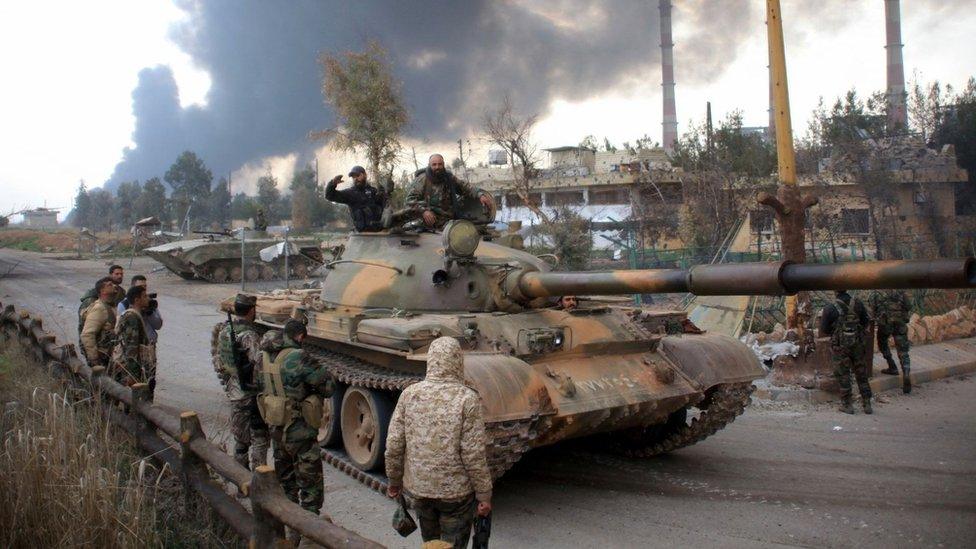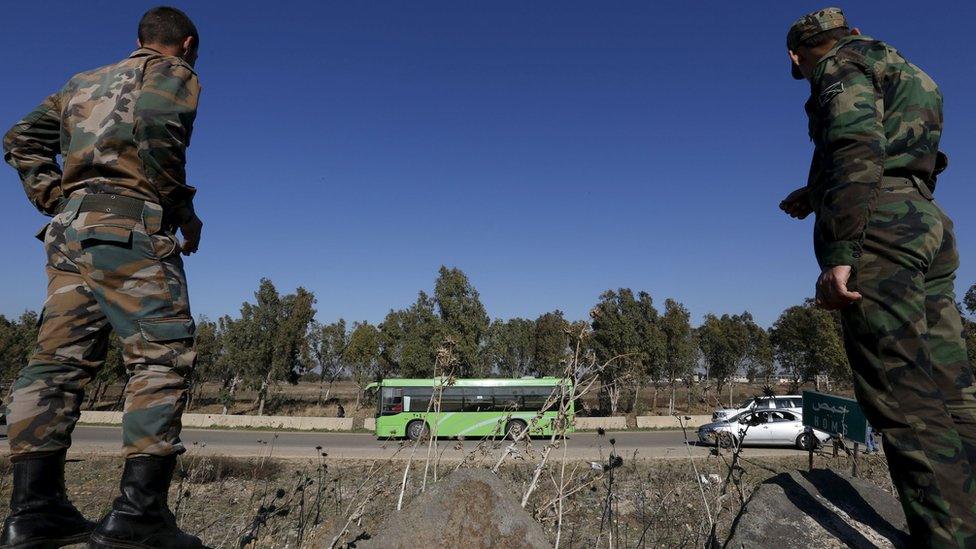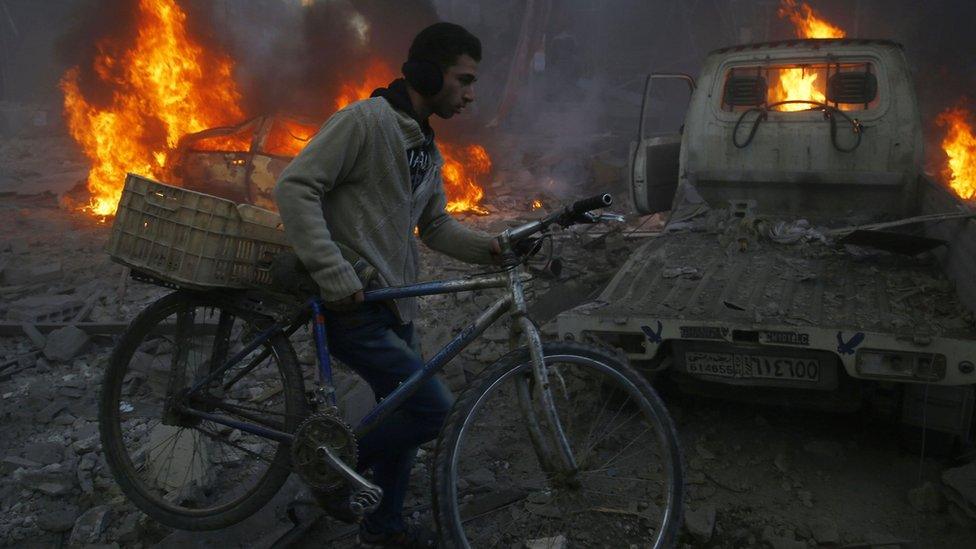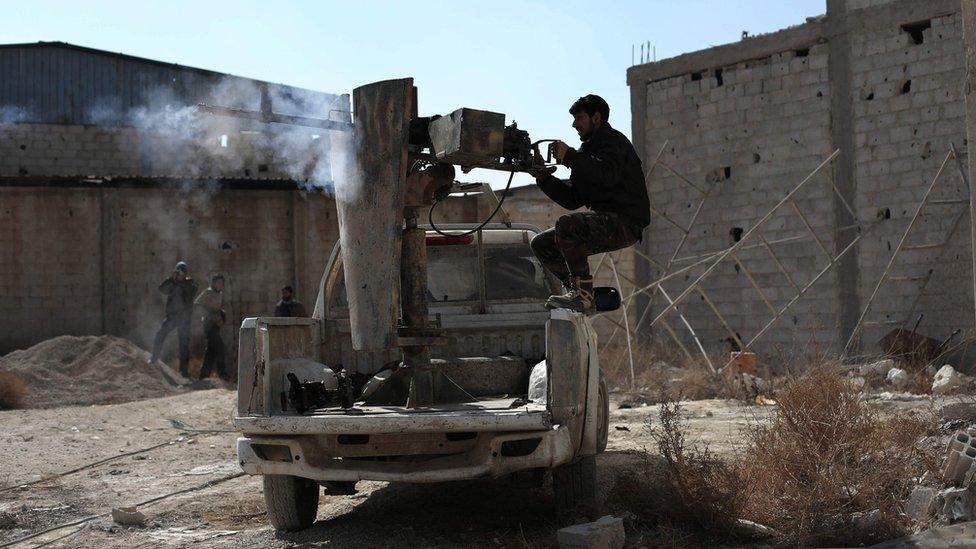Syria conflict: Truce, cessation or ceasefire?
- Published

Syria's government and opposition have accepted the terms of the cessation of hostilities
The US and Russia have announced a plan for a "cessation of hostilities" in Syria. Samir Puri of King's College London explains how it differs from a truce, a ceasefire or an armistice.
The cessation of hostilities is due to come into effect across Syria at 00:00 Damascus time on Saturday (22:00 GMT on Friday).
The process of reaching this agreement has been a fraught one, given the continuation of the fighting throughout the negotiations, especially around the northern city of Aleppo.
The cessation of hostilities faces the task of pulling apart combatants that have been at each other's throats in years of bitter war.
As such, its implementation will be accompanied by extreme tentativeness.
The various parties will each expect others to renege at the slightest provocation, and may even use the fragility of this state of affairs to their advantage.

Moreover, with the exclusion of the jihadist groups al-Nusra Front and Islamic State, it cannot purport to the status of a comprehensive agreement.
Clearly, the guns are unlikely to suddenly fall silent and fighting in some form will persist in Syria.
Given these realities, it is worth taking stock of the different arrangements involved in de-escalating a conflict, and their relevance for Syria.

Truce
A truce is suggestive of an ad-hoc arrangement, arrived at by the combatants, to pause the fighting.
Formal negotiations do not necessarily need to take place. Rather, mutual exhaustion after a particularly intensive period of fighting might lead the combatants to temporarily suspend their military operations.

A local truce deal in the Homs suburb of al-Wair allowed for rebel fighters to be evacuated
Truces may well match the varying momentum of the fighting, and may relate only to certain localities rather than the whole battlefront.
As recently as December, a local truce was agreed between the Syrian government and embattled rebels in Homs and to allow a partial evacuation from the western suburb of al-Wair.

Cessation of hostilities
A cessation of hostilities is more formal than a truce. However, it is still some way from a formal ceasefire.
A cessation of hostilities means that the combatants are willing to stop fighting and to restrain their forces. But it only loosely commits them to further steps.

More than 250,000 people have died in almost five years of war in Syria
The focus in negotiating this kind of agreement over Syria will have been very much the short-term: allowing humanitarian access to war-ravaged cities, and allowing further negotiations to take place without the persistence of war.
Given the complexity of the conflict in Syria, this is the most realistic outcome that diplomats will have been able to secure.
The hope will be for a pause to the bloodshed between Syrian government and opposition forces that might give way to a more formal ceasefire agreement.
Until then, the cessation of hostilities is more akin to a "wait-and-see" arrangement.

Ceasefire
A formal ceasefire is a negotiated agreement that will be accompanied by other associated commitments to de-escalate the fighting.

Previous attempts by the international community to broker a ceasefire in Syria have failed
This might mean a withdraw weapons, and possible commitments by the warring parties to reposition their forces in a way that accords with safe zones, demilitarised zones or a clearly demarcated line of separation.
This is extremely difficult to achieve if the battlefield picture remains fluid, as it has been in Syria.

Armistice
An armistice is a formal agreement by the combatants to end hostilities, with efforts to negotiate a lasting peace settlement following in its wake.
An armistice is a legally binding agreement. Examples in history include the armistices that ended the world wars.
However, these were agreements between warring states. In Syria, questions of legal equivalence between the factions would likely hamper any moves towards an armistice.
The government of Bashar al-Assad faces numerous factions of a domestic insurgency, to which it would be resistant to conferring any sense of legal equivalence.
Dr Samir Puri, external is a lecturer in international relations at the Department of War Studies, King's College London